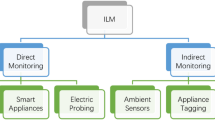Abstract
Power quality is an essential parameter in delivery of electrical power through the distributions networks in real time. Power transmission quality is affected by several factors which include frequently occurring voltage variations in the form of swells and sags, harmonic distortions, voltage and noise spikes. They severely degrade the quality of power delivered if unattended and directly have a consequence on the energy consumption which in turn increases the system cost and efficiency. The proposed research paper proposes and investigates an intelligent hybrid implementation of electrical network driven by a five layer ANFIS module driven by a set of FIS rule base. The proposed model has been tested after an elaborate mathematical modeling to arrive at the design electrical equations which are exported on to the ANFIS for training and validation. The proposed technique has been compared against existing ANN and Fuzzy algorithms and superior performance with respect to stability, settling time, reduction in noise have been observed in the experimentation. Faster convergence towards optimal power flow is achieved using the ANFIS model.











Similar content being viewed by others
References
Yang, X.S., Deb, S.: Engineering optimization by Cuckoo search. Int J. Math. Model. Numer. Optim. 1, 330–343 (2010)
Todorovski, M., Rajicic, D.: An initialization procedure in solving optimal power flow by genetic algorithm. IEEE Trans. Power Syst. 21(2), 480–487 (2006)
Grudinin, N.: Reactive power optimization using successive quadratic programming method. IEEE Trans. Power Syst. 13(4), 1219–1225 (1998)
Lo, K.L., Meng, Z.J.: Newton-like method for line Outage simulation. IEEE Proc. Gener. Trans. Distrib. 151(2), 225–231 (2004)
Nasralh, S., Mohammed, A., Shareef, H.: Reinforcement of power distribution network against voltage sags using graph theory. In: Proceedings of IEEE Conference on Research and Development (2009)
ao-Hsin, C., Chiu, C.H., Yang, Y.J.: Quantum-inspired tabu search algorithm for solving 0/1 knapsack problems. In: Proceedings of the 13th Annual Conference Companion on Genetic and Evolutionary Computation ACM (2011)
Salman, N., Mohammed, A., Shareef, H.: Voltage sag mitigation by combining optimal network reconfiguration and DSTATCOM placement using gravitational search algorithm. Int. Rev. Electr. Eng. 6(5), 2502–2512 (2011)
Erseghe, Tomaso, Tomasin, Stefano: Power flow optimization for smart microgrids by SDP relaxation on linear networks. IEEE Trans. Smart Grid 4(2), 751–762 (2013)
Yang, G., et al.: Automated classification of brain images using wavelet-energy and biogeography-based optimization. Multimed. Tools Appl. 75(23), 15601–15617 (2016)
Wang, H., Wang, J.: An effective image representation method using kernel classification. In Tools with Artificial Intelligence (ICTAI). In: 2014 IEEE 26th International Conference on (pp. 853–858). IEEE (2014)
W, Liu, et al.: Large-scale paralleled sparse principal component analysis. Multimed. Tools Appl. 75(3), 1481–1493 (2016)
Bakshi, S., et al.: Fast periocular authentication in handheld devices with reduced phase intensive local pattern. Multimed. Tools Appl. 1, 1–29 (2017)
Zhang, Li, Zhou, Wei-Da, Li, Fan-Zhang: With the development of electronics and computer industry, powerful wireless terminals came to facilitate human life. In the last decade, both customers and researchers paid attention to wireless video applications because they contain abundant and visual information. To ensure wireless video transmission, many cross-layer schemes which combined routing and scheduling mechanisms have been proposed. Multimed. Tools Appl. 74(1), 139–158 (2015)
Liang, R.Z., Shi, L., Wang, H., Meng, J., Wang, J.J.Y., Sun, Q., Gu, Y., 2016, Optimizing top precision performance measure of content-based image retrieval by learning similarity function. In: Pattern Recognition (ICPR), 23rd International Conference on (pp. 2954–2958). IEEE (2016)
Paul, Anand, Seungmin, Rho, Bharnitharan, K.: Interactive scheduling for mobile multimedia service in M2M environment. Multimed. Tools Appl. 71(1), 235–246 (2014)
Saldana, Jose: On the effectiveness of an optimization method for the traffic of TCP-based multiplayer online games. Multimed. Tools Appl. 75(24), 17333–17374 (2016)
Sangaiah, A.K., Samuel, O.W., Li, X., Abdel-Basset, M., Wang, H.: Towards an efficient risk assessment in software projects–Fuzzy reinforcement paradigm. Comput. Electr. Eng. (2017)
Lima, F.G.M., Galiana, F.D., Kockar, I., Munoz, J.: Phase shifter placement in large-scale systems via mixed integer linear programming. IEEE Trans. Power Syst. 18(3), 1029–1034 (2003)
Chung, T.S., Li, Y.Z.: A hybrid GA approach for OPF with consideration of FAXTS devices. IEEE Power Eng. Rev. 20, 54–57 (2000)
Lobato, E., Rouco, L., Navarrete, MI., Casanova R., Lopez, G.: ‘An LP-based optimal power flow for transmission losses and generator reactive margins minimization. In: Proceedings of IEEE Porto Power Tech Conference, Portugal (2001)
Yan, W., Liu, F., Chung, C.Y.: A hybrid genetic algorithm-interior point method for optimal reactive power flow. IEEE Trans. Power Syst. 21(3), 1163 (2006)
Pudjianto, D., Ahmed, S., Strbac, G.: Allocation of VAR support using LP and NLP based optimal power flows. IEEE Proc. Generic Trans. Distrib. 149(4), 377–383 (2002)
Sharma, A.K.: Optimal number and location of TCSC and load ability enhancement in deregulated electricity markets using MINLP. Int. J. Emerg. Electr. Power Syst. 5(1), 1–13 (2006)
Berizzi, A., Delfanti, M., Marannino, P., Pasquadibisceglie, M.S., Silvestri, A.: Enhanced security-constrained OPF with FACTS devices. IEEE Trans. Power Syst. 20(3), 1597–1605 (2005)
Granelli, G.P., Montagna, M.: Security constrained economic dispatch using dual Quadratic programming. Electr. Power Syst. Res. 56, 71–80 (2000)
Author information
Authors and Affiliations
Corresponding author
Rights and permissions
About this article
Cite this article
Zhang, Y., Wang, H. & Xie, Y. An intelligent hybrid model for power flow optimization in the cloud-IOT electrical distribution network. Cluster Comput 22 (Suppl 6), 13109–13118 (2019). https://doi.org/10.1007/s10586-017-1270-0
Received:
Revised:
Accepted:
Published:
Issue Date:
DOI: https://doi.org/10.1007/s10586-017-1270-0




